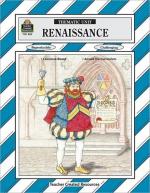|
This section contains 1,374 words (approx. 5 pages at 300 words per page) |

|
Gold and Silver. Money is used to provide equal exchanges of value for unlike products. During the Renaissance and Reformation, money came either in the form of gold and silver coins, or in promises to supply gold or silver coins by people whose credit was acceptable. Coins were minted with the approval of the king or some other ruler, but the actual number and placement of the coins was determined by bankers and the open market. There was no such thing as a monetary policy directed by governments.
Coin Sizes, Weight, and Fineness. In general, large gold coins such as ducats and florins were used to finance major projects of governments and individuals, while most daily business was carried out with silver or copper coins. The latter would usually only have value within a local economy where they could be readily...
|
This section contains 1,374 words (approx. 5 pages at 300 words per page) |

|




